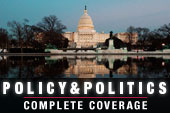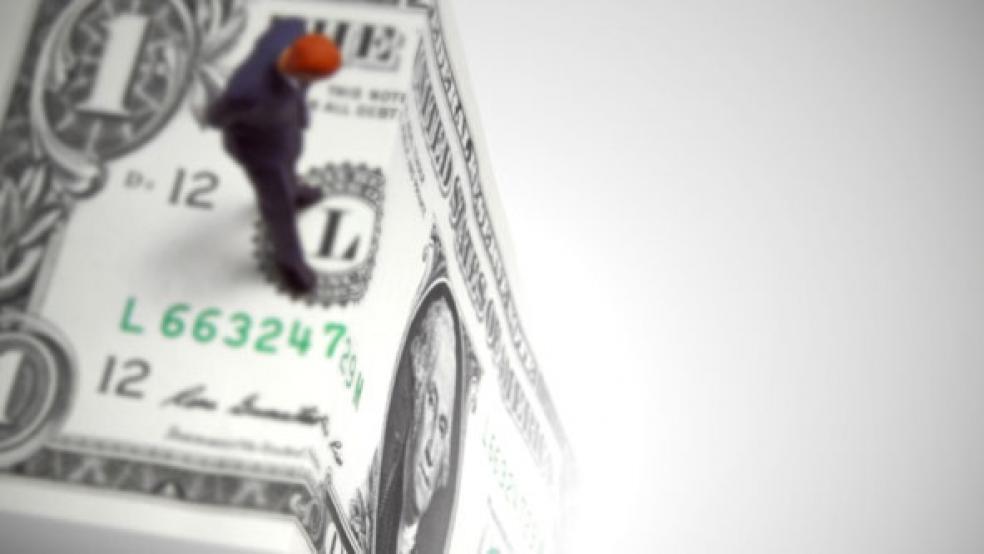About two weeks ago, the country appeared to dodge an economic bullet with the fiscal cliff deal.
But top bank economists on Thursday said the agreement opened the country up to a series of threats that hamper growth, pegging the chance of a recession at 23 percent this year and 20 percent the next.
“The fiscal cliff agreement has created new headwinds for the U.S. economy,” said Scott Anderson, chief economist at the San Francisco-based Bank of the West and chairman of the American Bankers Association’s economic advisory committee.

The last-minute bargain did nothing to address the breached debt ceiling, control projected deficits, or provide an alternative to the $109 billion in sequestered budget cuts that have merely been delayed for two months. President Obama and some Congressional Republicans praised the deal for averting a steep income tax hike on 99 percent of Americans, yet the agreement let a key stimulus measure—the payroll tax holiday—expire such that paychecks will be still be lower this year for much of the workforce.
No one is surprised by the idea that government dysfunction hurts the economy, since voters have been living with gridlock for more than two years. But the projections by the American Bankers Association reveal a strengthening private sector that has been weighed down by politics.
The committee predicts that the tax increases that did occur under the cliff agreement will cause a 1.25 percent drag in Gross Domestic Product growth this year. Consumer spending will slow in the first half of the year, as workers adjust to the return of higher payroll tax rates. The agreement will reduce the deficit from $1.09 trillion last year to $925 billion this year, the group said in its consensus forecast.
To put the23 percent probability of a recession into perspective, leading economists such as Larry Summers, a former Treasury secretary and adviser to President Obama who was not part of the American Bankers Association panel, put the odds at one-in-three after the last deal to raise the debt ceiling in 2011. Those harsh negotiations led to a historic downgrade of the U.S. credit rating by Standard & Poor’s, but no downturn.
Offsetting much of the friction caused by the government would be a strengthening housing recovery and resilient private sector, the committee of 13 bank economists said. The economy would pick up in the second half of the year, eventually improving at 2 percent annual clip. Hiring would be slow but steady at about 144,000 new jobs a month, with the unemployment rate falling to 7.4 percent by the end of the year.
But all those projections are based on resolving the debt ceiling and the sequestered budget cuts. And no one is entirely sure how that will play out as the country lurches toward a deadline somewhere between mid-February and early March.
Economists on the committee were divided as to whether all of the $109 billion in reductions to military and domestic spending will be implemented, or just some of it. If all the sequestered cuts go through, some members of the committee expect the economic drag to top 3 percent.
Scott Brown, chief economist at Raymond James & Associates, said at this stage both voters and the financial markets are weary of a government that veers from potential disaster to potential disaster. The uncertainty builds, even if the expectation is that the government will as usual reach some kind of compromise.
“It’s crisis fatigue at this point,” Brown said.




